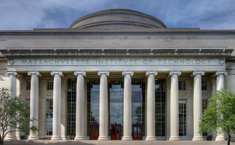
Project: Gorgon
Company/Alliance: Gorgon Joint Venture (Chevron Australia, ExxonMobil, Shell, Tokyo Gas, Osaka Gas and Chubu Electric)
Location: Barrow Island, Western Australia.
Start Date: Construction started September 15, 2009; Start date 2016
Size: 3.4 - 4.0 Mt/yr
CO2 Source: CO2 Capture from Natural Gas processing plant
Storage: Deep onshore sandstone reservoirs, 2.5 Km below Barrow Island (The plan is to re-inject the extracted CO2 from the CO2-rich natural gas field) via 7 km pipline
Motivation/Economics:
Injection is planned in anticipation of a carbon-tax. The project is estimated to cost US $55 billion. Chevron increased the cost estimate by $15 billion in December 2012, is mainly due to labor shortages, logistics challenges and the strength of the Australian dollar. Half of the six other LNG plants being built in Australia have sustained cost increases averaging more than 20%.
The CO2 Injection project investment is estimated to cost approximately $2 billion. The Australian government has committed $60 million to the Gorgon CO2 Injection Project through the Low Emissions Technology Demonstration Fund(LETDF).
Comments:
Planned to be the first CO2 sequestration project in Australia. This is the world's largest sequestration project and is supported by Australia's Government. The Australian Government accepted liability for Gorgon project (August 2009). Construction started November 2009. All necessary permits and approvals have been obtained (October 2010).
In October 2012, Australian's energy minister Martin Ferguson, annonuced that the Gorgon project was still on track for injection to start in 2015. At this time the project was 55% complete. The start date has now been pushed to 2016. The commercial-scale CCS demonstration project will capture and store between 3.4 and 4 million tonnes of CO2 per year – a total of 120 million tonnes over the project’s lifetime, and 40 per cent of its emissions.
The Greater Gorgon Fields lie 130-200km offshore and contain about 40 trillion cubic feet of gas. The gas contains about 14% CO2. The gas is proposed to be piped 7km via an onshore pipeline and separated onshore at a processing facility on Barrow Island. The project plans to capture up to 3.3 MT/Yr of CO2 and store it in deep formations below Barrow Island. Injection into the saline formation is planned to be via 8-9 injection wells with approximately 4 pressure management wells. The target reservoir is the Dupuy Formation, a massive turbidite sand deposit. The seal is the Barrow group, a marine shale.
Project Link: Gorgon project web page
Other Sources and Press Releases:
Chevron adds US$15b to Gorgon LNG project cost estimate (December 2012)
Chevron’s Gorgon Carbon Project on Track for Injection in 2015
(October 2012)
2010 CAGS Workshp II; Gorgon Project Overview [PDF] (October 2010)
Gorgon legal and policy issues (October 2010)
Prime Minister Gillard praises Gordon during visit (October 2010)
GE picked for $1.1 billion contract (March 2010)
Ground breaking starts construction (September 2009)
Australian Government accepts Gorgon liability (August 2009)
Gorgon project news, energy bulletin (January 2005)
Gorgon Clears environmental issues: News release (September 2007)